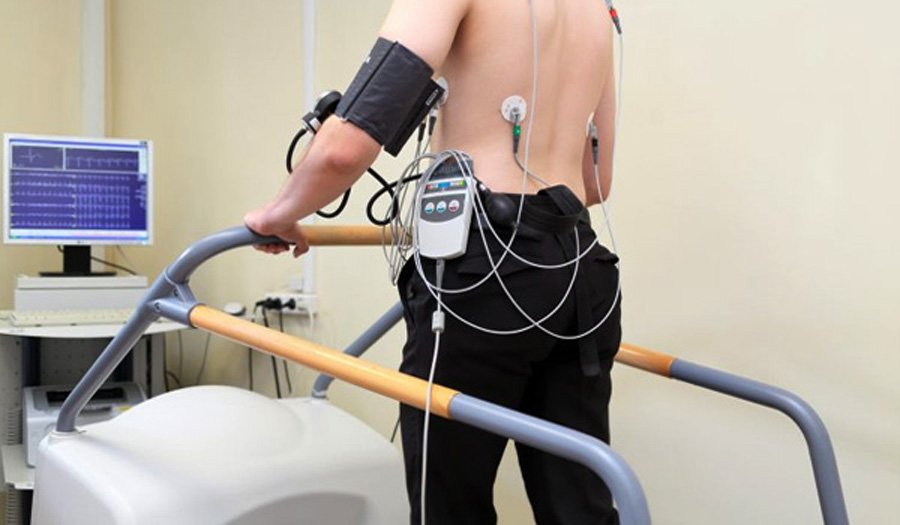TMT (Treadmill Test)

A Treadmill Test (TMT), also known as a Treadmill Stress Test, helps doctors evaluate heart function during physical exertion. It helps identify cardiovascular conditions such as coronary artery disease, arrhythmias, and heart failure.
How It Works
- Preparation: The patient wears comfortable clothes, and the technician attaches electrodes to monitor heart activity.
- Exercise Phase: The technician gradually increases the treadmill speed and incline while monitoring the patient’s heart rate, ECG, and blood pressure.
- Recovery: The patient slows down after exertion, and the technician monitors heart function as it returns to baseline.
Indications
Doctors use TMT to assess:
- Chest pain, shortness of breath, or irregular heart rhythms.
- Exercise capacity in heart disease patients or those recovering from heart surgery.
- Risk assessment for individuals with cardiovascular risk factors.
Diagnoses
TMT can help doctors detect:
- Coronary Artery Disease (CAD): Blockages in arteries.
- Arrhythmias: Abnormal heart rhythms triggered by exercise.
- Heart Valve Issues: Problems like stenosis or regurgitation.
- Heart Failure: Assessing how the heart pumps during exertion.
Results
Doctors analyze the results based on:
- Heart rate response: The heart rate should rise steadily with exertion.
- ECG changes: Abnormalities may indicate ischemia or heart attack risk.
- Blood pressure: Blood pressure should rise with exercise; an abnormal response signals heart issues.
Protocols
Doctors commonly use the Bruce Protocol, which gradually increases speed and incline. They may use other protocols like the Balke-Ware or Naughton Protocol for patients with mobility issues.
Benefits
TMT offers the following benefits:
- Non-invasive: It doesn’t require surgery or injections.
- Immediate data: It provides real-time heart function information.
- Widely available: Many hospitals and clinics offer it.
- Cost-effective: It’s less expensive than advanced imaging tests.
Limitations
TMT has some limitations:
- Mobility issues: Patients who cannot walk may require alternative tests.
- Detection limits: It may not detect mild coronary disease.
- False results: It may produce false positives or negatives.
Alternatives
Other options include:
- Pharmacologic Stress Test: Medications simulate exercise for patients who cannot walk.
- Stress Echocardiography: It combines exercise with ultrasound to create detailed heart images.
- Nuclear Stress Test: It uses radioactive material to assess blood flow and heart function.
